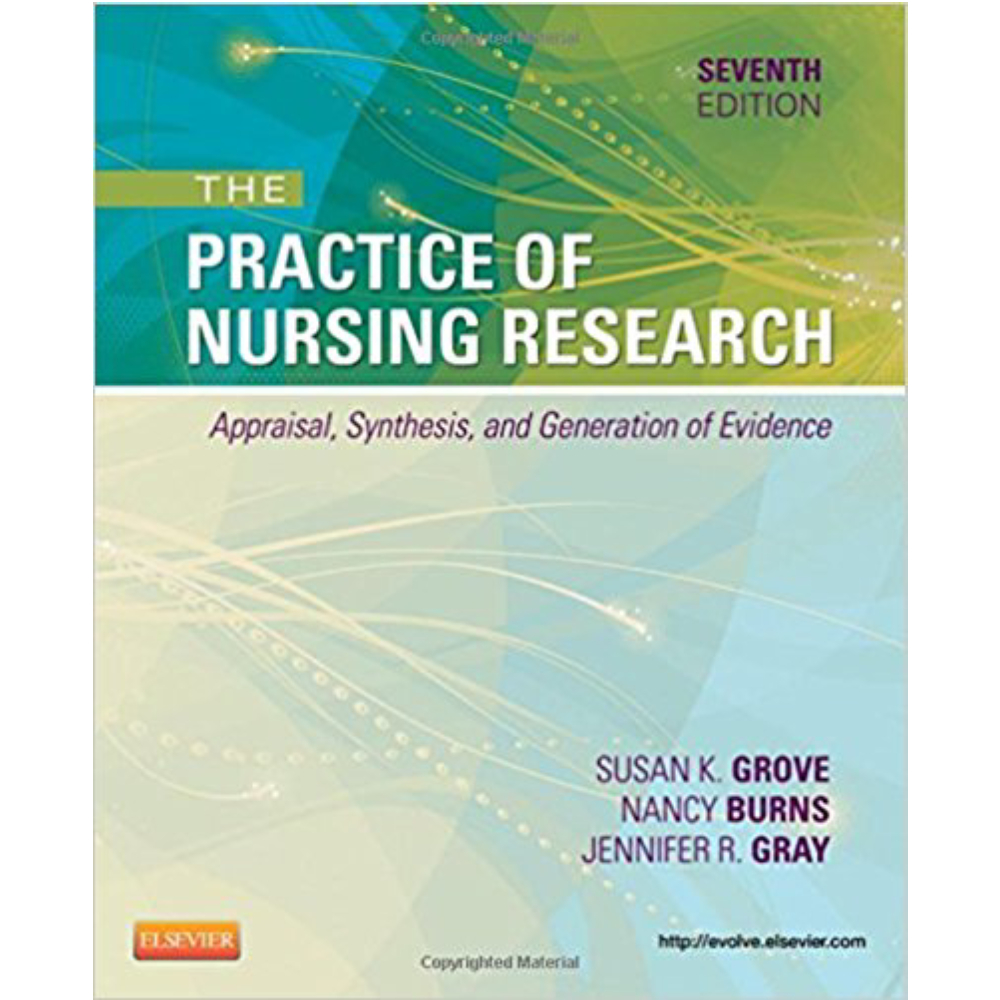Chapter 11: Selecting a Quantitative Research Design
Test Bank
MULTIPLE CHOICE
1. How does a comparative descriptive design differ from a typical descriptive design?
a. It compares statistics between the current time and an earlier time, whereas the typical descriptive design focuses on only one time period.
b. It compares a number of variables and examines the relationship between them, whereas a typical descriptive design never does this.
c. It differs in name only; both have the same design.
d. It describes data from two different groups, whereas a typical descriptive design focuses on a single group.
ANS: D
The commonly used descriptive study design examines characteristics of a single sample. It identifies a phenomenon of interest and the variables within the phenomenon, develops conceptual and operational definitions of the variables, and describes the variables. The comparative descriptive design examines and describes differences in variables in two or more groups that occur naturally in the setting. Descriptive statistics and inferential statistical analyses may be used to examine differences between or among groups.
DIF: Cognitive Level: Analysis REF: Page 216
2. Why is the threat of subject attrition more problematic in longitudinal designs than in other types of descriptive research?
a. Subjects are elderly.
b. Data analysis is complex, and missing data points necessitate dropping the subject from the analysis.
c. Data collection occurs over a much longer period of time.
d. There is selection bias because of the study requirements.
ANS: C
Longitudinal designs examine changes in the same subjects over time. They are expensive and require a long period of researcher and subject commitment. Measurement must be carefully planned and implemented, because the measures will be used repeatedly over time. There is often a bias in selection of subjects because of the requirement for a long-term commitment. In addition, loss of subjects (attrition—subject quits participating in the study) can be high and can decrease the validity of findings.
DIF: Cognitive Level: Analysis REF: Page 219
3. What do cross-sectional designs, trend designs, and event-partitioning designs have in common?
a. They all study subjects at one time.
b. They all focus on change over time.
c. They all involve data collection over months or year.
d. They are identical to longitudinal designs.
ANS: B
Cross-sectional designs examine groups of subjects in various stages of development, trends, patterns, and changes simultaneously with the intent to describe changes in the phenomenon across stages. The assumption is that the stages are part of a process that will progress over time. Selecting subjects at various points in the process provides important information about the totality of the process, even though the same subjects are not monitored through the entire process. Trend designs examine changes in the general population in relation to a particular phenomenon. The researchers select different samples of subjects from the same population at preset intervals of time, and at each selected time, they collect data from that particular sample. A merger of the cross-sectional or longitudinal and trend designs, the event-partitioning design, is used in some cases to increase sample size and to avoid the effects of history on the validity of findings. Cook and Campbell referred to these as cohort designs with treatment partitioning. True longitudinal designs examine changes in the same subjects over time. They are expensive and require a long period of researcher and subject commitment. Measurement must be carefully planned and implemented because the measures will be used repeatedly over time.
DIF: Cognitive Level: Synthesis REF: Page 220
4. The difference between a randomized block design and the more modern variant of including the extraneous variable in a multivariate analysis is which of the following?
a. The potentially extraneous variable is treated as an ordinal variable in the randomized block design but can be considered as a ratio or interval variable in a multivariate analysis.
b. In a multivariate analysis, the extraneous variable is excluded from analysis.
c. In a randomized block design two to three times as many subjects were required for statistical analysis.
d. In a randomized block design, the sample is chosen so that it lacks the potentially extraneous variable.
ANS: A
The randomized block design uses the two-group pretest-posttest or the two-group posttest pattern with the addition of a blocking variable. The blocking variable, if uncontrolled, is expected to confound the findings of the study. To prevent confounding of the findings, the subjects are rank ordered in relation to the blocking variable. This procedure ensures that the experimental group and the comparison group are equal in relation to the potentially confounding variable. The effect of blocking can also be accomplished statistically (through the use of analysis of covariance) without categorizing the confounding variable into discrete components.
DIF: Cognitive Level: Analysis REF: Page 246
5. A factorial design study measures the effect upon hemoglobin levels of four independent variables, each administered randomly and independently. How many distinct groups are there in this factorial design?
a. 4
b. 8
c. 12
d. 16
ANS: D
In a factorial design, two or more different characteristics, treatments, or events are independently varied within a single study. This design is a logical approach to examining multicausality. The simplest arrangement is one in which two treatments or factors are involved and, within each factor, two levels are manipulated (for example, the presence or absence of the treatment); this is referred to as a 2 2 factorial design. A 2 2 factorial design produces a study with four cells (A through D). Each cell must contain an approximately equivalent number of subjects. Cells B and C allow the researcher to examine of each intervention separately. Cell D subjects receive no treatment and serve as a control group. Cell A allows the researcher to examine the interaction between the two independent variables. This design can be used, as in the randomized block design, to control for confounding variables. With four independent variables, M, N, O, and P are randomly applied, and so there are sixteen groups. The formula is that the number of possibilities is equal to the number 2 to the power of how many binary variables there are. One variable is 2, two variables are 4, three variables are 8, and four are 16.
M N O P Variables
Group 1 + + + – M, N, O
Group 2 + – + – M, O
Group 3 + + – – M, N
Group 4 + – – – M
Group 5 – + + – N, O
Group 6 – – + – O
Group 7 – + – – N
Group 8 – – – – None
Group 9 + + + + M, N, O, P
Group 10 + – + + M, O, P
Group 11 + + – + M, N, P
Group 12 + – – + M, P
Group 13 – + + + N, O, P
Group 14 – – + + O, P
Group 15 – + – + N, P
Group 16 – – – + P
DIF: Cognitive Level: Evaluation REF: Page 247
6. The following diagram represents what type of design?
Group Subject selection Measurement Treatment Measurement
Experimental R M T M
Comparison NR M M
a. Posttest only design
b. Factorial design
c. Pretest-posttest control group design
d. Time series design
ANS: C
The pretest and posttest design with a comparison group is the most commonly used design in social science research. Subject selection is random (R) for only the experimental group, and non-random (NR) for the comparison group. Measurements for both groups (M) occur both before and after treatment. This quasi-experimental design is the first design discussed here that is generally interpretable. The uncontrolled threats to validity are primarily due to the absence of randomization and, in some studies, to the inability of the researcher to manipulate the treatment.
DIF: Cognitive Level: Analysis REF: Page 237
7. Nurses who give discharge teaching to patients after colonoscopy call these patients the day after the procedure to check on their status. At that time, patients who have had polyps removed invariably ask how long it will be until they receive their results. The nurses decide to design a study in which they will change their discharge teaching, in order to include information about the timeframe for biopsy results, and measure the results, comparing them with the results for the next month, before the change. Which of the following types of research will they use?
a. Correlational
b. Quasi-experimental
c. Experimental
d. Descriptive
ANS: B
The intent of the study is to examine the effect of an intervention; thus, only quasi-experimental or experimental designs are appropriate. Quasi-experimental and experimental designs examine causality. The power of the design to accomplish this purpose depends on the extent to which the actual effects of the experimental treatment (the independent variable) can be detected by measuring the dependent variable. Because data collection will not occur simultaneously in both groups, the study cannot use random assignment to group, which means that it is quasi-experimental, not experimental. The posttest-only design with comparison group is the specific study design here. With a posttest-only design with comparison group, selection threat is a problem. The lack of a pretest would ordinarily be a serious impediment to defining change, but because very few subjects will know the timeline for receipt of biopsy results, this objection is of little concern.
DIF: Cognitive Level: Application REF: Page 234
8. Several television programs, such as American Idol, allows viewers to text in votes for their favorite performer. From a research point of view, this is what kind of a design?
a. Survey
b. Predictive design
c. Model testing design
d. One-group pretest-posttest design
ANS: A
The term survey is used in two ways within scientific thought. It is used in a broad sense to mean any descriptive or correlational study; in this sense, survey tends to mean nonexperimental. In a narrower sense, survey is used to describe a data collection technique in which the researcher uses questionnaires or personal interviews to gather data about an identified population. Surveys, in the narrower definition, are used to gather data that can be acquired through self-report. Because of this limitation in data, some researchers view surveys as rather shallow and as contributing in only a limited way to scientific knowledge.
DIF: Cognitive Level: Application REF: Page 224
9. If a one-group pretest-posttest study uses subjects as their own controls, which is the study design?
a. Experimental
b. Quasi-experimental
c. Correlational
d. Descriptive
ANS: B
Quasi-experimental and experimental designs examine causality. Quasi-experimental study designs were developed to provide alternative means of examining causality in situations not conducive to experimental controls.
DIF: Cognitive Level: Comprehension REF: Page 231
10. Identify the type of research design employed in the following study: “In order to determine nursing students’ stress throughout the four semesters of the major, nursing students in all four semesters were surveyed as class groups at the mid-point of two contiguous semesters of coursework. Stress was assessed by a researcher-composed quantitative questionnaire.”
a. Cross-sectional design
b. Longitudinal design
c. Event-partitioning design
d. Case-study design
ANS: C
The event-partitioning design is a merger of the cross-sectional or longitudinal and trend designs; in event-partitioning, subjects representing the gamut of elapsed time since an event are sampled more than once each. Longitudinal designs examine changes in the same subjects over time. Cross-sectional designs are used to examine groups of subjects in various stages of development simultaneously with the intent to describe changes in the phenomenon across stages. Data across subjects is assumed to be comparable, for the variable of interest, and the relatively large sample size permits analysis of changes over time. The case study design involves an intensive exploration of a single unit of study, such as a person, family, group, community, or institution, or a small number of subjects who are examined intensively. It is seldom quantitative in nature, and is often regarded as a qualitative method, analogous to one-person or small group historical research, in terms of the process focused upon. It tells a story.
DIF: Cognitive Level: Application REF: Page 215













Reviews
There are no reviews yet.